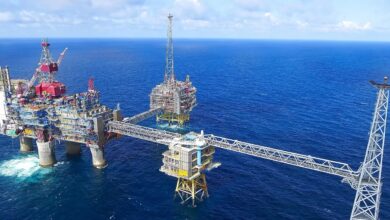Chevron sanctions Ballymore project in US Gulf of Mexico

Chevron has sanctioned the Ballymore project in the deepwater US Gulf of Mexico. The project, with a design capacity of 75,000 bbl/day of crude oil, will be developed as a 3-mi subsea tieback to the existing Chevron-operated Blind Faith platform.
“Once complete, Ballymore is expected to add a reliable supply of US-produced energy to help meet global demand. The project is designed to lower development costs by using a subsea tieback approach, standardized equipment and repeatable engineering solutions – leveraging existing operated infrastructure,” said Steve Green, president of Chevron North America Exploration and Production.
Ballymore will be Chevron’s first development in the Norphlet trend of the US gulf. The project will be in the Mississippi Canyon area in around 6,600 ft (2,000 m) of water, about 160 mi (260 km) southeast of New Orleans. Potentially recoverable oil-equivalent resources for Ballymore are estimated at more than 150 million bbl.
The project, which involves three production wells tied back via one flowline to the nearby Blind Faith facility, will require an investment of approximately $1.6 billion. Oil and natural gas production will be transported via existing infrastructure. First oil is expected in 2025.
Chevron subsidiary Chevron USA is the operator of the Ballymore project with a 60% working interest. Co-owner TotalEnergies has a 40% interest.




